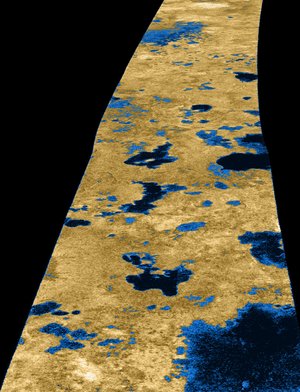Accept all cookies Accept only essential cookies See our Cookie Notice

About ESA
The European Space Agency (ESA) is Europe’s gateway to space. Its mission is to shape the development of Europe’s space capability and ensure that investment in space continues to deliver benefits to the citizens of Europe and the world.
Highlights
ESA - United space in Europe
This is ESA ESA facts Member States & Cooperating States Funding Director General Top management For Member State Delegations European vision European Space Policy ESA & EU Space Councils Responsibility & Sustainability Annual Report Calendar of meetings Corporate newsEstablishments & sites
ESA Headquarters ESA ESTEC ESA ESOC ESA ESRIN ESA EAC ESA ESAC Europe's Spaceport ESA ESEC ESA ECSAT Brussels Office Washington OfficeWorking with ESA
Business with ESA ESA Commercialisation Gateway Law at ESA Careers Cyber resilience at ESA IT at ESA Newsroom Partnerships Merchandising Licence Education Open Space Innovation Platform Integrity and Reporting Administrative Tribunal Health and SafetyMore about ESA
History ESA Historical Archives Exhibitions Publications Art & Culture ESA Merchandise Kids Diversity ESA Brand Centre ESA ChampionsLatest
Space in Member States
Find out more about space activities in our 23 Member States, and understand how ESA works together with their national agencies, institutions and organisations.
Science & Exploration
Exploring our Solar System and unlocking the secrets of the Universe
Go to topicAstronauts
Missions
Juice Euclid Webb Solar Orbiter BepiColombo Gaia ExoMars Cheops Exoplanet missions More missionsActivities
International Space Station Orion service module Gateway Concordia Caves & Pangaea BenefitsLatest
Space Safety
Protecting life and infrastructure on Earth and in orbit
Go to topicAsteroids
Asteroids and Planetary Defence Asteroid danger explained Flyeye telescope: asteroid detection Hera mission: asteroid deflection Near-Earth Object Coordination CentreSpace junk
About space debris Space debris by the numbers Space Environment Report In space refuelling, refurbishing and removingSafety from space
Clean Space ecodesign Zero Debris Technologies Space for Earth Supporting Sustainable DevelopmentApplications
Using space to benefit citizens and meet future challenges on Earth
Go to topicObserving the Earth
Observing the Earth Future EO Copernicus Meteorology Space for our climate Satellite missionsCommercialisation
ESA Commercialisation Gateway Open Space Innovation Platform Business Incubation ESA Space SolutionsLatest
Enabling & Support
Making space accessible and developing the technologies for the future
Go to topicBuilding missions
Space Engineering and Technology Test centre Laboratories Concurrent Design Facility Preparing for the future Shaping the Future Discovery and Preparation Advanced Concepts TeamSpace transportation
Space Transportation Ariane Vega Space Rider Future space transportation Boost! Europe's Spaceport Launches from Europe's Spaceport from 2012Latest

Titan landscape and ‘seas’ viewed by Cassini's radar
Thank you for liking
You have already liked this page, you can only like it once!
This image of Saturn’s largest moon, Titan, obtained by Cassini's radar instrument during a near-polar flyby on 22 February 2007, features dunes and lakes, one of which is larger than any lake on Earth and could be legitimately called a sea. Titan’s lakes are thought to consist of liquid methane and ethane.
The image runs from southern latitudes, starting at 32 ° South, 55 ° West. Featureless terrain with bright streaks heads north and slightly east through dune fields interspersed with exposed bright mounds. In places, the dunes wrap around the bright mounds, which suggests the mounds are raised. In one case, the dunes wrap around an unusual rose-shaped structure, approximately 70 kilometres across. Near the spacecraft’s closest approach (33 ° North, 28 ° West), where the swath is at its narrowest, the terrain is dark and mottled, with occasional bright outcrops and fine dunes. Heading north, the action of liquids – fine channels and canyon-like structures can be seen. Later, depressions interpreted as volcanic calderas or drained lakes can be seen. As the swath continues, these become more plentiful, and some are partly filled with dark material thought to be liquid hydrocarbons, hence lakes. In places, the lakes reside in what appear to be nested, near-circular depressions, reminiscent of nested calderas.
The final section of the swath, closest to the pole, contains by far the largest lakes observed by Cassini’s radar to date. The lake’s bright, jutting shoreline indicates that old, eroded landforms may have been flooded. This lake on Titan connects via a relatively narrow channel to a much larger (at least 45 000 square kilometres) lake, containing a large (approximately 12 000 square kilometres) island or peninsula. The last part of the image passes close to the pole (86 ° North, 290 ° East), before heading east and slightly south. At the end of the swath, we see the largest lake observed yet – at least 100 000 square kilometres, covering a greater fraction of Titan (0.12 percent of its surface) than the largest terrestrial inland sea, the Black Sea (0.085 percent of the Earth’s surface).
-
CREDIT
NASA/JPL -
LICENCE
ESA Standard Licence

Cassini captures familiar forms on Titan’s dunes

Titan's Great Lakes

Liquid Lakes on Titan

Titan’s north polar lakes and seas















 Germany
Germany
 Austria
Austria
 Belgium
Belgium
 Denmark
Denmark
 Spain
Spain
 Estonia
Estonia
 Finland
Finland
 France
France
 Greece
Greece
 Hungary
Hungary
 Ireland
Ireland
 Italy
Italy
 Luxembourg
Luxembourg
 Norway
Norway
 The Netherlands
The Netherlands
 Poland
Poland
 Portugal
Portugal
 Czechia
Czechia
 Romania
Romania
 United Kingdom
United Kingdom
 Slovenia
Slovenia
 Sweden
Sweden
 Switzerland
Switzerland


























